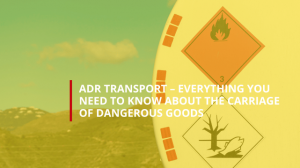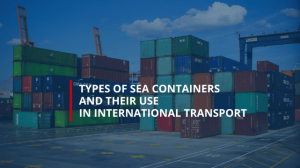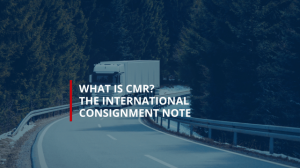

07/01/2025
CBAM: New obligations for importers in the European Union – a comprehensive guide
CBAM: New obligations for importers in the European Union - a comprehensive guide
The European Union is working intensively towards climate neutrality with the goal of achieving zero greenhouse gas emissions by 2050. In this context, the CBAM (Carbon Border Adjustment Mechanism) was created – a mechanism to equalise the cost of emissions between EU and foreign producers. This mechanism plays a key role in protecting European industry and supporting the global transition towards a low-carbon economy.
What is CBAM?
CBAM, or CO₂ border price adjustment mechanism, is a regulatory tool introduced by the European Union to address carbon leakage. Carbon leakage occurs when production is relocated outside the EU where climate regulations are less stringent, resulting in increased global emissions. CBAM imposes an obligation to report emissions associated with the production of imported goods and to purchase certificates covering these emissions.
Legislation
CBAM is based on two main pieces of legislation:
– Regulation (EU) No 2023/956 of the European Parliament and of the Council of 10 May 2023. – establishes the legal framework for the mechanism, including reporting obligations and the purchase of CBAM certificates.
– Commission Implementing Regulation (EU) No 2023/1773 of 17 August 2023. – clarifies the rules on emissions reporting during the transition period and the operation of the CBAM.
The genesis of CBAM
The genesis of CBAM stems from the need to protect the climate and guarantee a level playing field for European companies. The EU has been operating an emissions trading scheme (EU ETS) since 2005, which imposes costs on the greenhouse gas emissions generated by EU industry. CBAM aims to offset these costs for importers, who until now have been able to import products into the EU from countries with laxer emissions regulations.
CBAM objectives
CBAM pursues three main objectives:
1. Climate protection: tackling global emissions growth and encouraging countries outside the EU to adopt stricter climate standards.
2. Levelling the playing field: protecting EU companies from unfair competition from countries that do not bear the costs of emissions.
3. Raising global climate standards: creating economic incentives for third countries to introduce policies in line with CO₂ reductions.
Scope of CBAM
Imports into the customs territory of the EU
CBAM applies to goods imported into the EU that are listed in the Annex to Regulation 2023/956. This mainly applies to sectors with high CO₂ emissions, such as:
Iron and steel
Aluminium
Cement
Fertilisers
Hydrogen
Electricity
Exclusions from the Mechanism
(a) The CBAM mechanism does not cover all countries. Goods imported from Switzerland, Norway, Iceland and Liechtenstein are excluded because these countries apply comparable climate regulations. In addition, the CBAM does not cover:
(b) Goods with a value of less than EUR 150.
(c) Goods imported under inward processing – a customs procedure that allows goods to be processed without the imposition of a duty, as long as they are subsequently exported outside the EU.
Phases of CBAM implementation
CBAM will be implemented in two phases:
a) Transition period (1.10.2023 – 31.12.2025)
During this period, importers will be required to report emissions, but without having to purchase CBAM certificates. Reports will be submitted quarterly.
b) Target period (from 1.01.2026)
After 1.01.2026, importers will be required to both report emissions and purchase CBAM certificates to cover emissions associated with imported goods.
CBAM report
The CBAM report is the key document in which an authorised notifier reports the GHG emissions associated with imported goods. Reporting obligations vary depending on the phase of implementation of the CBAM mechanism: during the transition period (2023-2025) and the target period (from 2026).
Transitional period (1.10.2023 – 31.12.2025)
During the transition period, importers are required to report but are not yet obliged to purchase CBAM certificates. The purpose of this period is to prepare importers for the full implementation of the system and to familiarise them with the emission reporting rules.
Scope of reporting: the CBAM report during the transition period covers the reporting of actual GHG emissions associated with imported CBAM goods.
Reporting frequency: importers must report quarterly to the relevant national authorities.
Report content: each quarterly report must include:
– Details of actual emissions associated with the production of imported goods.
– Documentation of the origin of emissions, including data provided by third country producers.
Purpose of interim reports: The introduction of CBAM reports during the transitional period is intended to develop reporting procedures by importers and to collect data to prepare for full CBAM implementation.
Target period (from 1.1.2026)
During the target period, CBAM reporting is more extensive and involves the purchase of CBAM certificates. Importers are required to report emissions accurately and to purchase certificates to cover these emissions.
Scope of reporting: CBAM reporting must cover the GHG emissions embedded in goods imported into the EU and the numbers of CBAM certificates to be surrendered by the importer for redemption.
Reporting frequency: there is an annual report to be submitted by 31 May each year for emissions generated in the previous year.
Report content: the annual CBAM report for the target period must include:
– Emissions data embedded in the imported goods, on the basis of which the number of CBAM certificates required is counted.
– The number of CBAM certificates that the importer has provided for redemption to cover the declared emissions.
This two-phase CBAM reporting process is crucial for importers to progressively implement the requirements and comply with EU regulations.
Consequences of not submitting or incorrectly submitting a CBAM report
Failure to file a CBAM report or to provide incomplete or incorrect information has serious consequences, both financial and operational. CBAM imposes strict reporting rules and any deviation from these rules can expose the importer to sanctions.
Consequences of not submitting a CBAM report:
a) Financial penalty:
If a CBAM report is not submitted on time, the importer may be liable to pay a financial penalty. The amount of the penalty is calculated based on the equivalent of the missing CBAM certificates that the importer would have had to purchase to cover the emissions associated with the imported goods.
The penalty is at least equivalent to the cost of the missing certificates and will depend on the average prices of ETS (Emissions Trading Scheme) certificates over a given period. Given the fluctuation in the price of ETS certificates, this penalty can be very high, especially with an increase in the market price of emissions.
b) Failure to import:
Failure to submit a CBAM report in a timely manner or lack of certificates for redemption may result in withholding the ability to import CBAM goods into the EU. The competent customs authorities may refuse to accept further consignments until the importer has fulfilled his reporting and certification obligations.
c) Corrective procedure:
If errors or deficiencies are found in the CBAM report, the importer is obliged to take the necessary corrective action within a certain period of time. If the importer fails to take such action, the competent authority may impose additional sanctions.
Importers have the right to correct the report within a specified period of time, but failure to correct or take corrective action within the specified period may lead to further consequences, including additional penalties.
Consequences of incorrectly submitting a CBAM report:
a) Penalty for submitting incorrect data:
If the CBAM report contains incorrect emissions data and the importer fails to correct this within the prescribed timeframe, a financial penalty may be imposed. Incorrect data may include incorrectly calculated emissions, missing data on the country of origin of the goods, or lack of documentation to support the emissions embedded in the imported products.
The penalty for incorrect data will include both the value of missing certificates and additional sanction fees.
b) Refusal to accept the report and additional sanctions:
If the CBAM report is found to be incomplete or incorrect, the importer will be required to correct it. Failure to take corrective action or re-submission of a defective report may result in an additional administrative penalty and possible suspension of import opportunities.
c) Administrative sanctions:
In addition to financial penalties, the importer may be subject to administrative sanctions, including restrictions on further CBAM import activities until all reporting requirements are met. There may also be a loss of status as an authorised CBAM declarant, preventing further importation.
Due diligence and risk minimisation:
It is worth noting that importers have an obligation to exercise due diligence in obtaining data from third country suppliers. Due diligence consists of taking all possible steps to obtain complete, reliable and correct data on emissions embedded in the goods. If it is difficult to obtain data, the importer must provide evidence of its efforts to obtain this information.
CBAM authorised notifier status
From 2025, importers will be able to apply for CBAM Authorised Declarant status, which will be required to import CBAM goods from 1 January 2026. This status gives the importer the right to import CBAM goods into the European Union and imposes certain obligations that must be met in order for the activity to comply with EU regulations.
The following article presents information up to date as of 01.12.2024. PKS International CARGO S.A. shall not be held liable for changes in the legal status and failure to update this text.
Choose the best specialists in Poland!
Put your customs and transport matters in the hands of professionals. Contact our Sales Department and find out what we can offer you!





